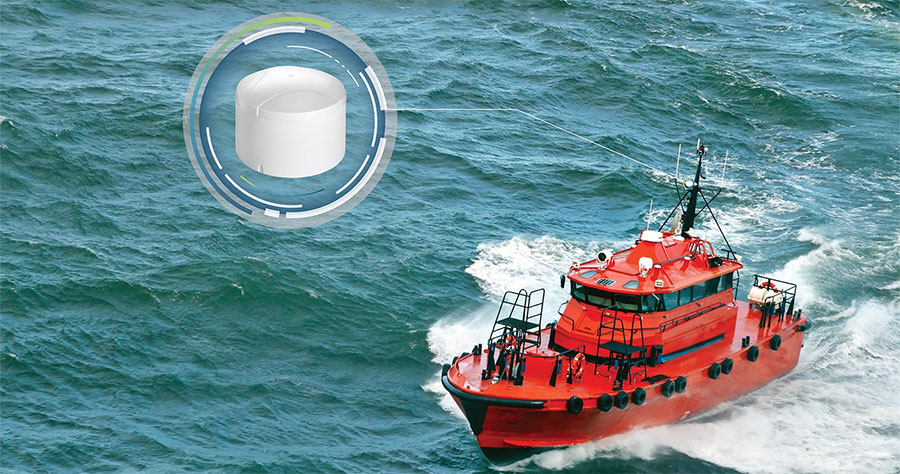Suppliers
Add your company
Precise GNSS & GPS Positioning Solutions for the Toughest Marine & Maritime Environments
If you design, build or supply GPS/GNSS Correction, create a profile to showcase your capabilities on this page
Products
GPS/GNSS Correction Services & Technologies for Precise Positioning
GNSS correction services compensate for errors in satellite signals, enabling real-time and post-processed accuracy at the centimeter level. From environmental monitoring to hydrographic surveying, these services enhance spatial data quality and operational efficiency in marine and coastal domains.
Types of GNSS Correction Technologies
Several GNSS correction methods have evolved to meet the demanding accuracy needs of ocean-based applications. Each offers distinct capabilities and trade-offs regarding infrastructure, latency, and precision.
Real-Time Kinematic (RTK)
RTK is a high-precision method that uses phase measurements of the carrier signal and correction data from a nearby base station. RTK enables real-time corrections, delivering centimeter-level accuracy. It is widely used in coastal hydrographic surveys, port operations, and marine robotics.
Precise Point Positioning (PPP)
PPP utilizes satellite orbit and clock corrections to achieve decimeter- to centimeter-level accuracy without requiring a local base station. It is ideal for offshore surveys and operations where base station infrastructure is not feasible. Unlike RTK, PPP offers a broader geographic reach, though with increased convergence time.
PPP-RTK (Hybrid Correction Method)
This hybrid method combines the global coverage of PPP with the fast convergence and real-time capabilities of RTK. PPP-RTK is suitable for dynamic environments like offshore construction and scientific research platforms requiring rapid initialization and reliable precision.
Space-Based Augmentation System (SBAS)
SBAS enhances GNSS accuracy using geostationary satellites to broadcast correction messages. It supports safety-critical applications in marine navigation systems and is integral to regional ocean observation networks. While SBAS offers meter-level accuracy, its simplicity and availability make it a staple in general vessel navigation.
Differential GPS / Differential GNSS (DGPS / DGNSS)
These methods apply corrections from known reference stations to improve positional accuracy. DGPS and DGNSS are commonly used in ocean mapping and environmental monitoring, particularly for updating nautical charts and supporting autonomous surface vessels.
Network RTK and Virtual Reference Station (VRS)
Network RTK systems use data from a network of base stations to interpolate corrections for a specific location. VRS enhances this by generating a synthetic base station near the user’s location. Both methods support large-scale, high-accuracy marine surveying and precision port infrastructure monitoring.
NTRIP and RTCM Protocols
The Networked Transport of RTCM via Internet Protocol (NTRIP) standardizes the streaming of GNSS corrections over the Internet. Combined with RTCM (Radio Technical Commission for Maritime Services) formats, NTRIP enables real-time delivery of GNSS data across vessels, ocean platforms, and hydrographic sensors.
Dead Reckoning and Sensor Fusion
Dead reckoning uses previous positions, velocity, and heading to estimate the current position. When integrated with GNSS corrections and sensor fusion from IMUs (Inertial Measurement Units), odometers, and other navigation sensors, it provides resilience in signal-degraded environments such as under bridges, harbors, or during GNSS outages.
Applications in Ocean Science and Technology
GNSS correction services support various applications critical to maritime and coastal operations.
Hydrographic Surveying
High-precision GNSS corrections ensure the accuracy of seabed mapping, enabling safe navigation and supporting the creation of electronic nautical charts. RTK and Network RTK are commonly used for shallow-water surveys.
Environmental and Coastal Monitoring
GNSS corrections improve geospatial accuracy in measuring sea level changes, shoreline erosion, and tidal observations. DGPS and SBAS solutions are often employed in fixed monitoring stations.
Unmanned Systems and Marine Robotics
Autonomous surface and underwater vehicles rely on GNSS corrections for accurate navigation. PPP and PPP-RTK are essential for beyond-visual-line-of-sight (BVLOS) operations in offshore environments, while RTK is favored for precise maneuvering in ports and harbors.
Offshore Construction and Infrastructure
GNSS corrections guide offshore platform placement, cable laying, and dredging activities. PPP and Network RTK services enable precise positioning even in remote locations without dense ground-based infrastructure.
Scientific Research and Ocean Observation
Floating buoys, underwater gliders, and remote ocean instruments depend on high-precision positioning to collect reliable spatial data. PPP and SBAS corrections are commonly integrated into their onboard navigation systems.
Asset Tracking and Maritime Logistics
GNSS correction services enable accurate tracking of ships, containers, and autonomous craft. Correction-integrated GNSS solutions ensure better route planning, fleet management, and geofencing in port operations.
Comparison of GNSS Correction Technologies
| Technology | Accuracy | Infrastructure Required | Latency | Coverage | Use Cases |
| RTK | 1–2 cm | Local base station | Low | Limited | Hydrographic surveys, port navigation |
| PPP | 5–10 cm | Global correction data | Moderate | Global | Offshore platforms, autonomous systems |
| PPP-RTK | 1–5 cm | Global + regional corrections | Low | Broad | Scientific instruments, BLOS operations |
| SBAS | 1–2 m | Regional satellites | Low | Regional | Vessel navigation, coastal surveys |
| DGPS/DGNSS | <1 m | Nearby reference stations | Low | Regional | Charting, environmental monitoring |
| Network RTK/VRS | 1–2 cm | Dense base station network | Low | Regional | Construction, marine robotics |
GNSS Base Stations and Infrastructure
Base stations or reference stations serve as the backbone of GNSS correction networks. These stations log satellite signals from a fixed, known position and broadcast correction data to mobile receivers. Key considerations for base station deployment in ocean science include:
- Proximity to operational areas for minimal baseline distance
- Data formats like RTCM for interoperability
- Reliable communication links (e.g., NTRIP, radio, satellite uplinks)
- Support for multi-constellation systems, including GPS, GLONASS, GALILEO, and BeiDou
Networked base stations enable scalable correction services for large marine operations, especially when deployed as part of VRS or Network RTK configurations.
Sensor Fusion with IMUs and Odometers
GNSS corrections are often combined with onboard sensors such as IMUs, odometers, and magnetometers for enhanced navigation. This fusion improves reliability in GNSS-denied environments, such as:
- Harbors and canals, where signal multipath is high
- Underwater missions, where GNSS signals are unavailable
- Urban coastlines, where buildings cause signal degradation
Inertial navigation units (INS) and sensor fusion algorithms ensure continuous positioning, using GNSS as an absolute reference and dead reckoning during outages.
Relevant Standards and Protocols
Various standards and protocols govern GNSS correction technologies and their use in maritime and oceanographic settings:
- RTCM SC-104: Defines correction message formats for marine applications
- IALA Guidelines: Cover DGNSS service provision for coastal and harbor navigation
- NMEA 0183/NMEA 2000: Standards for GNSS data exchange on marine vessels
- ITU Recommendations: Address satellite communication and augmentation protocols
- STANAG 4586: Defines interoperability for unmanned systems using GNSS data
Compliance with appropriate standards ensures compatibility, safety, and reliability across maritime GNSS implementations.
Trends and Innovations
The field of GNSS correction services is advancing rapidly with innovations in:
- Cloud-based correction delivery, reducing dependency on terrestrial networks
- Low-Earth orbit (LEO) satellite augmentation, offering faster updates and reduced latency
- Hybrid GNSS+Inertial navigation systems, improving accuracy in dynamic or obstructed environments
- Integrated positioning platforms for multi-modal navigation on autonomous vessels
- Real-time ephemeris data feeds, enhancing PPP and PPP-RTK convergence
These developments aim to improve correction accuracy, robustness, and accessibility for ocean science applications.
Role in Future Ocean Science Missions
GNSS correction services are instrumental in enabling the next generation of marine exploration and monitoring:
- Coastal resilience programs depend on accurate positioning to assess climate change impacts
- Seabed mapping initiatives use RTK and Network RTK to generate high-resolution bathymetry
- Autonomous exploration platforms rely on PPP-RTK for precise navigation in remote regions
- Offshore renewable energy deployment uses corrected GNSS data for infrastructure siting
As demands for precision and automation grow in ocean science, GNSS correction technologies will remain central to operational success and scientific discovery.










